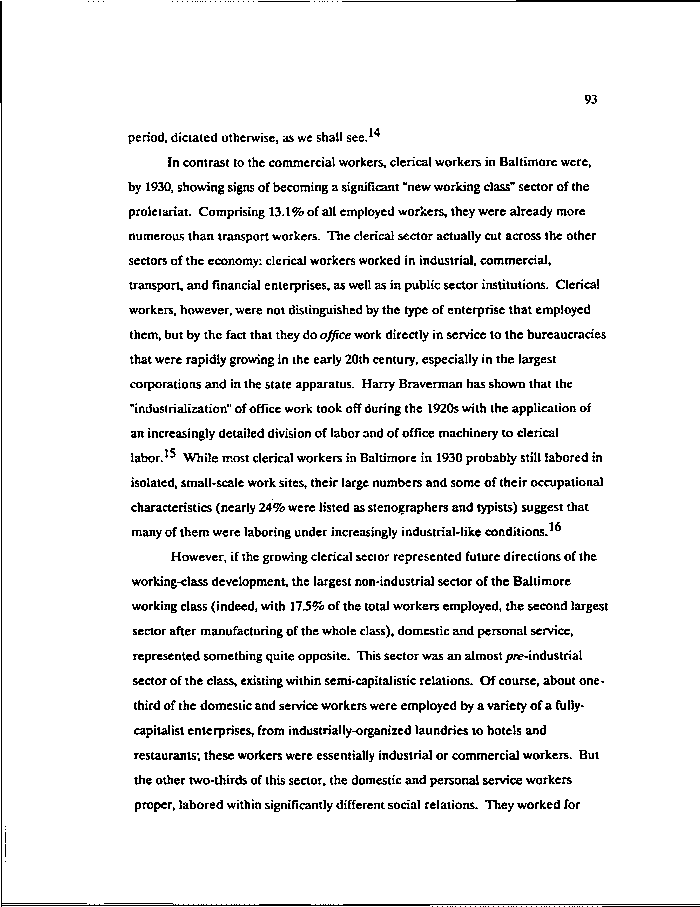|
93
period, dictated otherwise, as we shall see.
In contrast to the commercial workers, clerical workers in Baltimore were,
by 1930, showing signs of becoming a significant "new working class" sector of the
proletariat. Comprising 13.1% of all employed workers, they were already more
numerous than transport workers. The clerical sector actually cut across the other
sectors of the economy: clerical workers worked in industrial, commercial,
transport, and financial enterprises, as well as in public sector institutions. Clerical
workers, however, were not distinguished by the type of enterprise that employed
them, but by the fact that they do office work directly in service to the bureaucracies
that were rapidly growing in the early 20th century, especially in the largest
corporations and in the state apparatus. Harry Braverman has shown that the
"industrialization" of office work took off during the 1920s with the application of
an increasingly detailed division of labor and of office machinery to clerical
labor. ^ While most clerical workers in Baltimore in 1930 probably still labored in
isolated, small-scale work sites, their large numbers and some of their occupational
characteristics (nearly 24% were listed as stenographers and typists) suggest that
many of them were laboring under increasingly industrial-like conditions.
However, if the growing clerical sector represented future directions of the
working-class development, the largest non-industrial sector of the Baltimore
working class (indeed, with 17.5% of the total workers employed, the second largest
sector after manufacturing of the whole class), domestic and personal service,
represented something quite opposite. This sector was an almost pre-industriaJ
sector of the class, existing within semi-capitalistic relations. Of course, about one-
third of the domestic and service workers were employed by a variety of a fully-
capitalist enterprises, from industrially-organized laundries to hotels and
restaurants; these workers were essentially industrial or commercial workers. But
the other two-thirds of this sector, the domestic and personal service workers
proper, labored within significantly different social relations. They worked for
|

